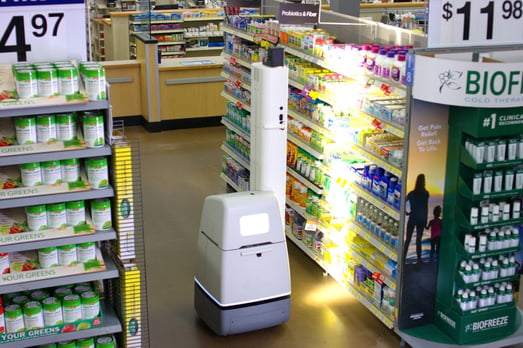
The use of commercial robotics technology is hardly new. What is new is the myriad of fundamental applications today's technology is offering to speed service and enhance efficiency. Recently, Lowes tested customer service robots in some stores to help shoppers locate their products. I'm all for it. I can never find anyone in my local Lowes to help me. Now Walmart is testing robots equipped with scanning technology to improve product management. The robots come equipped with cameras to scan aisles, assessing the level of stock, number of missing products, and misplaced items abandoned by shoppers in order to facilitate more accuracy in pricing, purchasing, inventory management, and ultimately, increase sales. The robots simply scan the aisles transmitting replenishment, pricing exceptions, and misplaced product data to stocking employees. These scanning robots do the job an estimated 3 times faster than staff. Walmart explains that in addition to moving employees to more productive tasks, the company is hoping to save customers time and make “stores more convenient and easier to shop, ensuring that products are available when our customers want them.”
Will Humans be Phased Out?
From what I can tell, the short answer is no. Robots will not be replacing humans...not really...not yet. It is likely robots will be utilized full time in the most mundane and repetitive tasks. Also, in those tasks with high incidents of potential error. The machines are simply quicker and more accurate in some exercises. Utilizing robotic technology in these areas will free up time for store staff to concentrate on those tasks that are not yet able to be managed by a robot. The corporate message appears to be that the robots are here to help in the execution of day-to-day store operations. Clearly, that position is accurate, but how much machines will encroach upon both skilled and unskilled labor is yet to be seen.
Most of the work performed by humans at present can be automated in due course of time. Intelligent machines with advanced technology can quickly learn and perform the given tasks. Unlike humans who have to be trained individually in an expensive and time-consuming manner, the robots can be trained quickly and effectively all at once. Here is a short list of skilled jobs that are expected to be replaced by machines in the coming decades:
- Driving trucks, buses, cars, and taxis
- Piloting boats and planes
- Operating cash counters and stores at grocery shops and other consumer outlets
- Cutting and trimming of grass lawns
- Removal of snow and ice from the roads
While automation might not eliminate all the occupations in their entirety in the near future, it will certainly affect almost all jobs to a greater or lesser extent. Automation already shows the trends of extending beyond mere mechanical and manufacturing activities to knowledge based sectors like healthcare and finance. If you think about it long enough, one could envision a world where people do largely nothing. We could reach such efficiency levels through robotics and artificial intelligence that it would be too costly to integrate human effort into the process. It would be cheaper and more efficient to pay people to not work. It may sound like a utopian view but it could theoretically be the way the future unfolds. Looks like I was born 50 years too soon for a seat on the gravy train. To stay informed on these topics and more subscribe to our blog http://www.land-link.com/blog



 Land-Link, a well respected professional organization, has been providing its clients with effective transportation and logistics solutions since 1978.
Land-Link, a well respected professional organization, has been providing its clients with effective transportation and logistics solutions since 1978.

